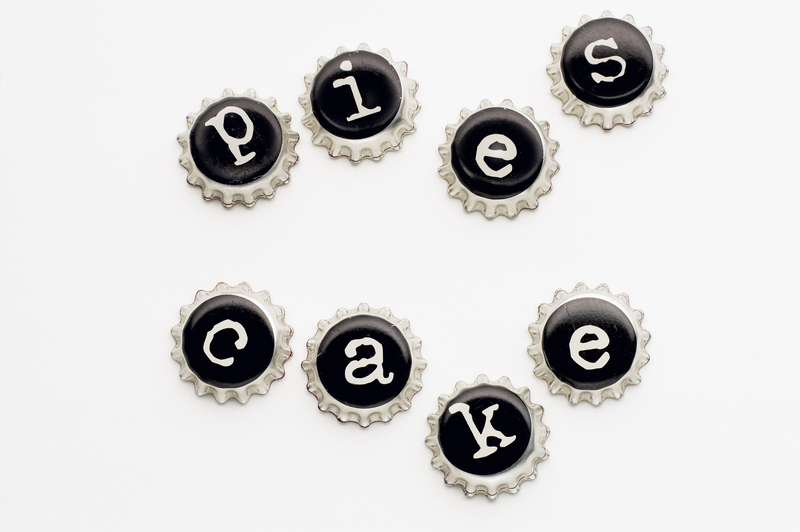Conserve and Preserve: Home Waste Reduction Strategies
Across the globe, households produce tons of waste every year. As populations increase and consumer habits evolve, home waste management becomes a vital component of environmental conservation and sustainable living. This article offers comprehensive, actionable, and effective home waste reduction strategies to help you minimize your ecological footprint, conserve natural resources, and foster a greener future for generations to come.
Understanding the Importance of Home Waste Reduction
Why should we care about home waste? The answer is simple: waste directly impacts our environment, health, and economy. Landfills take up valuable space, release harmful methane gases, and contribute to soil and water contamination. Moreover, the resources used to manufacture, transport, and dispose of everyday goods strain the planet's limited reserves. By adopting thoughtful home waste reduction techniques, you not only save money but also contribute significantly to preserving our planet.
Benefits of Reducing Household Waste
- Environmental Preservation: Less trash means less strain on landfills, reduced pollution, and conservation of fragile ecosystems.
- Resource Conservation: Using fewer resources translates into less energy consumption and fewer raw materials withdrawn from nature.
- Economic Savings: Reducing waste typically results in buying less and making better use of products, which saves money in the long run.
- Community Wellbeing: Responsible waste management creates healthier living environments and often leads to stronger, more aware communities.

Key Principles: The 5 R's of Waste Management
Adopting the "5 R's" is fundamental for any household aiming to conserve and preserve. These pillars provide a straightforward framework for effective household waste minimization.
- Refuse: Say no to unnecessary items, single-use plastics, and unsolicited freebies.
- Reduce: Limit your consumption to what you truly need.
- Reuse: Find innovative ways to repurpose items instead of discarding them.
- Recycle: Sort waste responsibly and ensure recyclables are clean and properly disposed of.
- Rot: Compost organic waste to return nutrients to the earth rather than sending it to landfill.
Conserve and Preserve: Practical Home Waste Reduction Strategies
Refuse: Be a Conscious Consumer
- Decline single-use plastics: Always carry a reusable bag, water bottle, and coffee cup to refuse disposable alternatives.
- Avoid excessive packaging: Opt for products with minimal or eco-friendly packaging, and let your purchases send a message to manufacturers.
- Say no to junk mail: Unsubscribe from paper catalogs and opt for digital communications instead.
- Think before you buy: Support companies and products with sustainable practices, and invest in longevity over convenience.
Reduce: Make Thoughtful Choices
- Plan meals: Create a weekly menu and shopping list to avoid food waste and impulse purchases.
- Buy in bulk: Purchasing items in bulk reduces packaging waste and is usually more cost-effective.
- Embrace minimalism: A decluttered home not only saves space but also ensures you only own what you use and love, cutting down on unnecessary purchases.
- Go digital: Shift to digital bills, books, and communications to conserve paper.
Reuse: Give Items a Second Life
- Repurpose glass jars: Use empty food jars for food storage, organizing small parts, or as vases.
- Swap and share: Participate in local community swaps, lending libraries, and sharing platforms for items like tools, toys, or clothes.
- Mend and repair: Learn basic repair skills for clothing, electronics, and furniture to prolong their life.
- Upcycle creatively: Turn old furniture, textiles, or pallets into new, functional pieces.
Recycle: Close the Loop
- Sort responsibly: Separate paper, plastics, glass, and metals according to your local recycling guidelines.
- Clean recyclables: Rinse containers to avoid contamination, which can spoil entire batches of recycling.
- Recycle electronics and batteries: Take these items to designated drop-off points to prevent hazardous materials from leaching into the environment.
- Support recycled products: Purchase goods made from recycled materials to encourage market demand.
Rot: Compost Organic Waste
- Start a home compost: Use kitchen scraps and yard waste to create nutrient-rich compost for your garden.
- Bokashi bins or worm farms: For apartment dwellers, compact indoor options allow for food waste breakdown with minimal space.
- Understand what to compost: Stick to fruit and vegetable scraps, coffee grounds, eggshells, and avoid meat or dairy unless your system is built for it.
Innovative Home Waste Reduction Strategies
Practice Sustainable Food Management
Food waste is a significant contributor to landfills. Tackling this issue begins at home:
- Store food properly: Use airtight containers, freeze excess, and rotate groceries to use older items first.
- Embrace leftovers: Get creative with recipes using leftovers or food scraps.
- Preserve seasonal produce: Learn canning, drying, or pickling to extend the shelf-life of local produce and avoid spoilage.
- Portion control: Serve smaller portions, especially for children, to avoid plate waste.
Smart Shopping and Eco-Friendly Purchases
Being mindful at the point of purchase is pivotal to waste conservation at home.
- Choose sustainable brands: Support companies with ethical sourcing and minimal environmental impact.
- Bulk buy with reusable containers: Shop at zero-waste or bulk stores using your containers to cut down on packaging waste.
- Buy quality, not quantity: Investing in durable goods reduces the frequency of replacements and waste.
- Opt for concentrated refills: Use refillable cleaning and personal care products instead of single-use plastics.
Green Cleaning: Reduce Toxic and Packaging Waste
- DIY cleaners: Make your own cleaning solutions using basic ingredients like vinegar, baking soda, and lemon to avoid plastic bottles and harsh chemicals.
- Reusable cleaning cloths: Trade paper towels for washable rags, microfiber cloths, or old t-shirts.
- Purchase in bulk: Buy cleaning products in bulk and decant into smaller, reusable bottles at home.
Bathroom Waste Reduction Strategies
- Solid toiletries: Use bar soap, shampoo bars, and toothpaste tablets to cut down on plastic packaging.
- Reusable alternatives: Consider washable makeup remover pads, razors, cotton rounds, and menstrual products.
- Eco-friendly toilet paper: Choose toilet paper made from recycled materials or bamboo, ideally with minimal packaging.
Toy and Clothing Waste: Rethink Disposal
- Host swaps: Organize neighborhood clothing and toy swaps to provide items with new homes rather than discarding them.
- Donate thoughtfully: Give gently used items to charities or friends rather than trashing them.
- Choose timeless over trendy: Purchase classic, versatile pieces that won't go out of style quickly.
Waste Reduction for the Digital Age
Minimize Electronic Waste at Home
- Buy refurbished electronics: Extending the life of devices reduces manufacturing waste.
- Repair before replacing: Seek out repair services or tutorials for simple fixes.
- Participate in e-waste recycling: Return old electronics to certified recyclers or manufacturer take-back programs.
Cut Down on Paper Waste
- Go paperless: Set digital billing and statements as your default option.
- Reuse scrap paper: Use the blank side of printed papers for notes, lists, or as kids' drawing paper.
- Opt for electronic invitations: Send e-vites and online cards rather than paper versions for events and holidays.
Creating a Waste Reduction Culture at Home
Involve the Whole Family
- Lead by example: Make sustainability a visible part of daily routines so children learn by watching your actions.
- Assign "waste watcher" roles: Rotate responsibilities among family members for check waste habits and recycling bins.
- Educate and encourage: Discuss the impacts of waste and praise creative reuse and waste reduction efforts.
Small Steps Add Up
Even minor changes in daily routines can yield significant results over time. The goal isn't overnight perfection but gradual, meaningful improvement. Keeping a waste diary for a week can be eye-opening, highlighting unexpected sources of waste and opportunities for change.

Tools and Resources for Household Waste Minimization
- Apps and trackers: Use mobile apps to monitor your garbage production and set waste reduction goals.
- Composting guides: Websites and community centers often offer workshops and handouts on home composting.
- Online swap networks: Join groups like Freecycle or Buy Nothing to trade items locally.
- Library of Things: Many municipalities host borrowing programs for tools, kitchen gadgets, and more.
Conclusion: Conserve and Preserve for a Healthier Planet
Reducing home waste is more than an individual responsibility--it's an opportunity for every household to contribute to a cleaner, safer, and more sustainable world. By understanding the significance of the 5 R's, integrating innovative waste reduction methods, and fostering an eco-conscious culture, you can significantly reduce your household's environmental impact.
Remember: Every small step towards household waste reduction is a stride toward conservation and preservation. Start today by evaluating your consumption habits, embracing reuse and recycling, and sharing your journey with others. Together, we can conserve resources, preserve our environment, and pave the way for a greener future.
Further Reading
- EPA | Reduce, Reuse, Recycle: https://www.epa.gov/recycle
- Zero Waste Home: https://zerowastehome.com
- Compost Guide: https://www.compostguide.com
Start the journey today--conserve resources, preserve our climate, and inspire others, one household at a time.